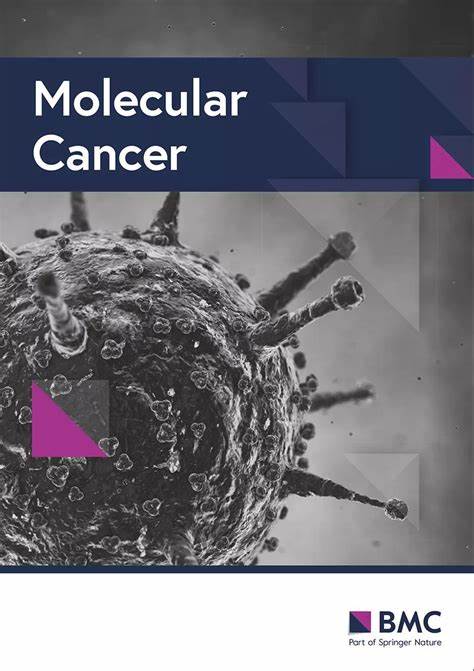Multimodal sequencing of neoadjuvant nivolumab treatment in hepatocellular carcinoma reveals cellular and molecular immune landscape for drug response
IF 27.7
1区 医学
Q1 BIOCHEMISTRY & MOLECULAR BIOLOGY
引用次数: 0
Abstract
A striking characteristic of liver cancer is its extensive heterogeneity, particularly with regard to its varied response to immunotherapy. In this study, we employed multimodal sequencing approaches to explore the various aspects of neoadjuvant nivolumab treatment in liver cancer patients. We used spatially-resolved transcriptomics, single- and bulk-cell transcriptomics, and TCR clonotype analyses to examine the spatiotemporal dynamics of the effects of nivolumab. We observed a significantly higher clonal expansion of T cells in the tumors of patients who responded to the treatment, while lipid accumulation was detected in those of non-responders, likely due to inherent differences in lipid metabolic processes. Furthermore, we found a preferential enrichment of T cells, which was associated with a better drug response. Our results also indicate a functional antagonism between tumor-associated macrophages (TAMs) and CD8 cells and their spatial separation. Notably, we identified a UBASH3B/NR1I2/CEACAM1/HAVCR2 signaling axis, highlighting the intense communication among TAMs, tumor cells, and T-cells that leads to pro-tumorigenic outcomes resulting in poorer nivolumab response. In summary, using integrative multimodal sequencing investigations, combined with the multi-faceted exploration of pre- and post-treatment samples of neoadjuvant nivolumab-treated HCC patients, we identified useful mechanistic determinants of therapeutic response. We also reconstructed the spatiotemporal model that recapitulates the physiological restoration of T cell cytotoxicity by anti-PD1 blockade. Our findings could provide important biomarkers and explain the mechanistic basis differentiating the responders and non-responders.肝细胞癌新辅助纳武单抗治疗的多模式测序揭示了药物反应的细胞和分子免疫景观
肝癌的一个显著特征是其广泛的异质性,特别是对免疫治疗的不同反应。在这项研究中,我们采用多模态测序方法来探索肝癌患者新辅助纳武单抗治疗的各个方面。我们使用空间分辨转录组学、单细胞和大细胞转录组学以及TCR克隆型分析来检查纳武单抗作用的时空动态。我们观察到对治疗有反应的患者肿瘤中T细胞的克隆扩增明显更高,而在无反应的患者中检测到脂质积累,可能是由于脂质代谢过程的固有差异。此外,我们发现了T细胞的优先富集,这与更好的药物反应有关。我们的研究结果还表明,肿瘤相关巨噬细胞(tam)和CD8细胞之间的功能拮抗作用及其空间分离。值得注意的是,我们发现了UBASH3B/NR1I2/CEACAM1/HAVCR2信号轴,突出了tam、肿瘤细胞和t细胞之间的强烈通信,导致促肿瘤结果,导致较差的纳武单抗反应。总之,通过综合多模式测序研究,结合对新辅助纳武单抗治疗的HCC患者治疗前后样本的多方面探索,我们确定了治疗反应的有用机制决定因素。我们还重建了时空模型,该模型概括了抗pd1阻断对T细胞毒性的生理恢复。我们的发现可以提供重要的生物标志物,并解释区分应答者和无应答者的机制基础。
本文章由计算机程序翻译,如有差异,请以英文原文为准。
求助全文
约1分钟内获得全文
求助全文
来源期刊

Molecular Cancer
医学-生化与分子生物学
CiteScore
54.90
自引率
2.70%
发文量
224
审稿时长
2 months
期刊介绍:
Molecular Cancer is a platform that encourages the exchange of ideas and discoveries in the field of cancer research, particularly focusing on the molecular aspects. Our goal is to facilitate discussions and provide insights into various areas of cancer and related biomedical science. We welcome articles from basic, translational, and clinical research that contribute to the advancement of understanding, prevention, diagnosis, and treatment of cancer.
The scope of topics covered in Molecular Cancer is diverse and inclusive. These include, but are not limited to, cell and tumor biology, angiogenesis, utilizing animal models, understanding metastasis, exploring cancer antigens and the immune response, investigating cellular signaling and molecular biology, examining epidemiology, genetic and molecular profiling of cancer, identifying molecular targets, studying cancer stem cells, exploring DNA damage and repair mechanisms, analyzing cell cycle regulation, investigating apoptosis, exploring molecular virology, and evaluating vaccine and antibody-based cancer therapies.
Molecular Cancer serves as an important platform for sharing exciting discoveries in cancer-related research. It offers an unparalleled opportunity to communicate information to both specialists and the general public. The online presence of Molecular Cancer enables immediate publication of accepted articles and facilitates the presentation of large datasets and supplementary information. This ensures that new research is efficiently and rapidly disseminated to the scientific community.
 求助内容:
求助内容: 应助结果提醒方式:
应助结果提醒方式:


